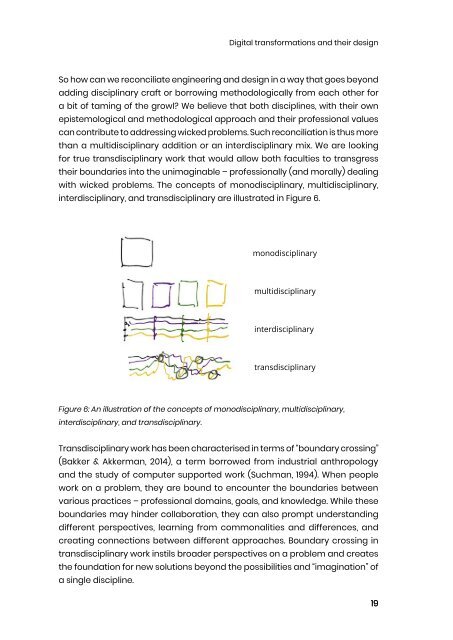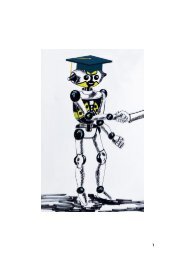13. Digital transformations and their design – renewal of the socio-technical approach
You also want an ePaper? Increase the reach of your titles
YUMPU automatically turns print PDFs into web optimized ePapers that Google loves.
<strong>Digital</strong> <strong>transformations</strong> <strong>and</strong> <strong><strong>the</strong>ir</strong> <strong>design</strong><br />
So how can we reconciliate engineering <strong>and</strong> <strong>design</strong> in a way that goes beyond<br />
adding disciplinary craft or borrowing methodologically from each o<strong>the</strong>r for<br />
a bit <strong>of</strong> taming <strong>of</strong> <strong>the</strong> growl? We believe that both disciplines, with <strong><strong>the</strong>ir</strong> own<br />
epistemological <strong>and</strong> methodological <strong>approach</strong> <strong>and</strong> <strong><strong>the</strong>ir</strong> pr<strong>of</strong>essional values<br />
can contribute to addressing wicked problems. Such reconciliation is thus more<br />
than a multidisciplinary addition or an interdisciplinary mix. We are looking<br />
for true transdisciplinary work that would allow both faculties to transgress<br />
<strong><strong>the</strong>ir</strong> boundaries into <strong>the</strong> unimaginable <strong>–</strong> pr<strong>of</strong>essionally (<strong>and</strong> morally) dealing<br />
with wicked problems. The concepts <strong>of</strong> monodisciplinary, multidisciplinary,<br />
interdisciplinary, <strong>and</strong> transdisciplinary are illustrated in Figure 6.<br />
monodisciplinary<br />
multidisciplinary<br />
interdisciplinary<br />
transdisciplinary<br />
Figure 6: An illustration <strong>of</strong> <strong>the</strong> concepts <strong>of</strong> monodisciplinary, multidisciplinary,<br />
interdisciplinary, <strong>and</strong> transdisciplinary.<br />
Transdisciplinary work has been characterised in terms <strong>of</strong> “boundary crossing”<br />
(Bakker & Akkerman, 2014), a term borrowed from industrial anthropology<br />
<strong>and</strong> <strong>the</strong> study <strong>of</strong> computer supported work (Suchman, 1994). When people<br />
work on a problem, <strong>the</strong>y are bound to encounter <strong>the</strong> boundaries between<br />
various practices <strong>–</strong> pr<strong>of</strong>essional domains, goals, <strong>and</strong> knowledge. While <strong>the</strong>se<br />
boundaries may hinder collaboration, <strong>the</strong>y can also prompt underst<strong>and</strong>ing<br />
different perspectives, learning from commonalities <strong>and</strong> differences, <strong>and</strong><br />
creating connections between different <strong>approach</strong>es. Boundary crossing in<br />
transdisciplinary work instils broader perspectives on a problem <strong>and</strong> creates<br />
<strong>the</strong> foundation for new solutions beyond <strong>the</strong> possibilities <strong>and</strong> “imagination” <strong>of</strong><br />
a single discipline.<br />
19


















